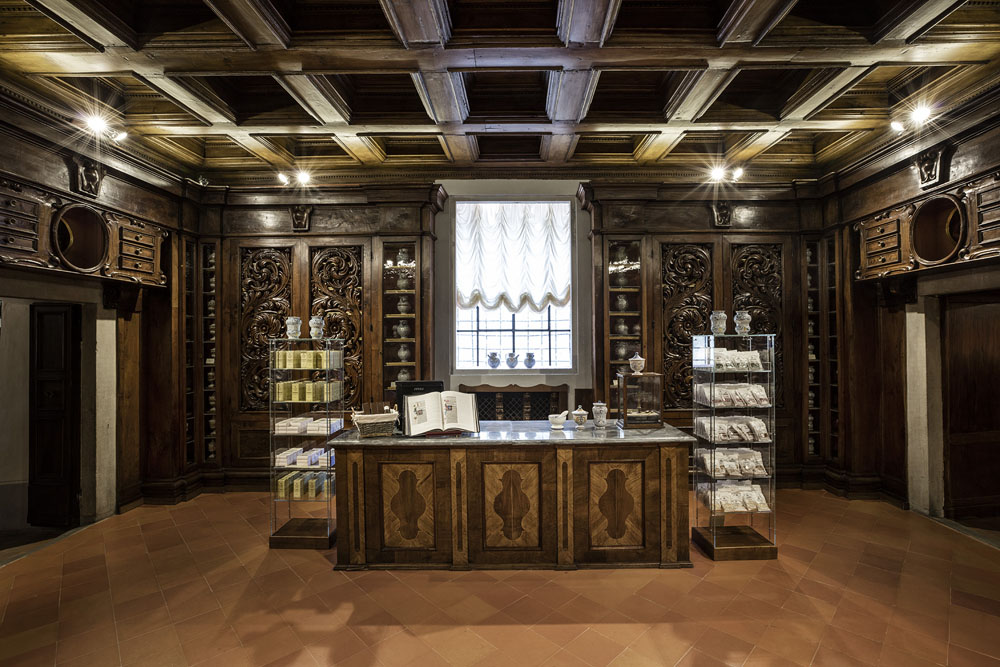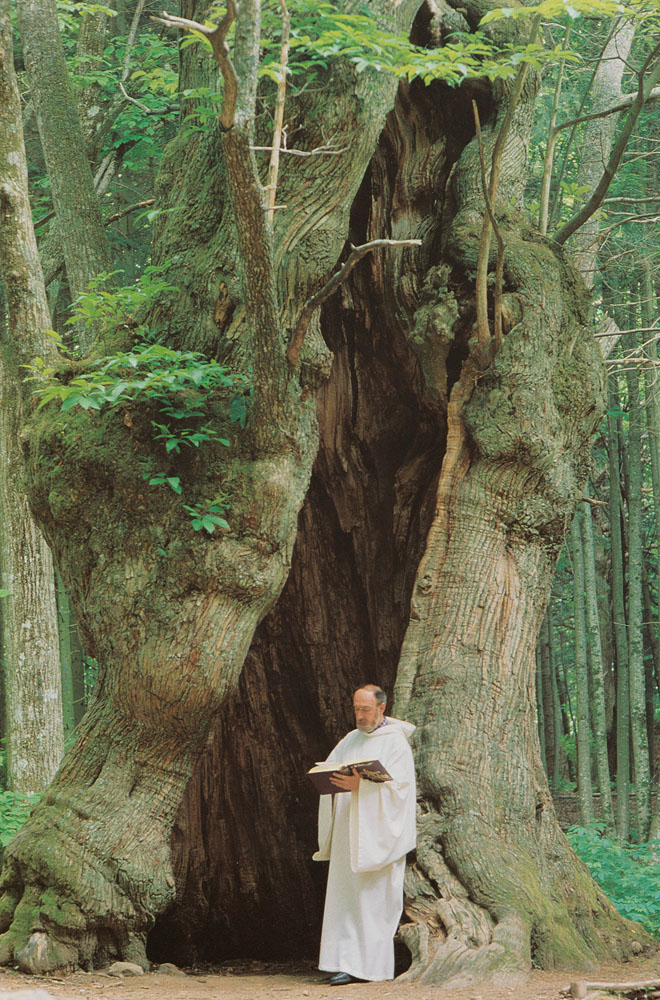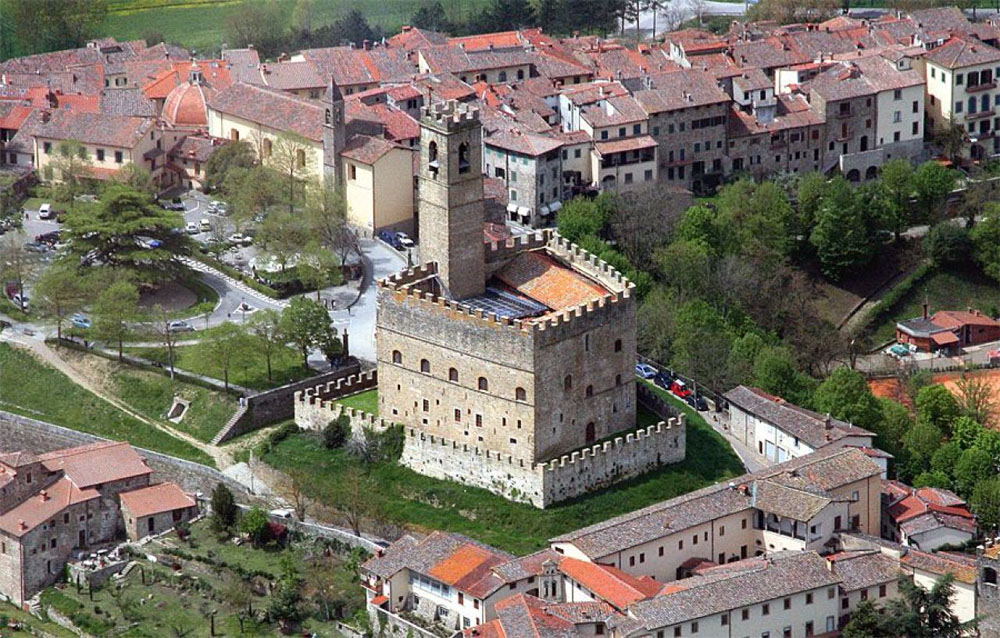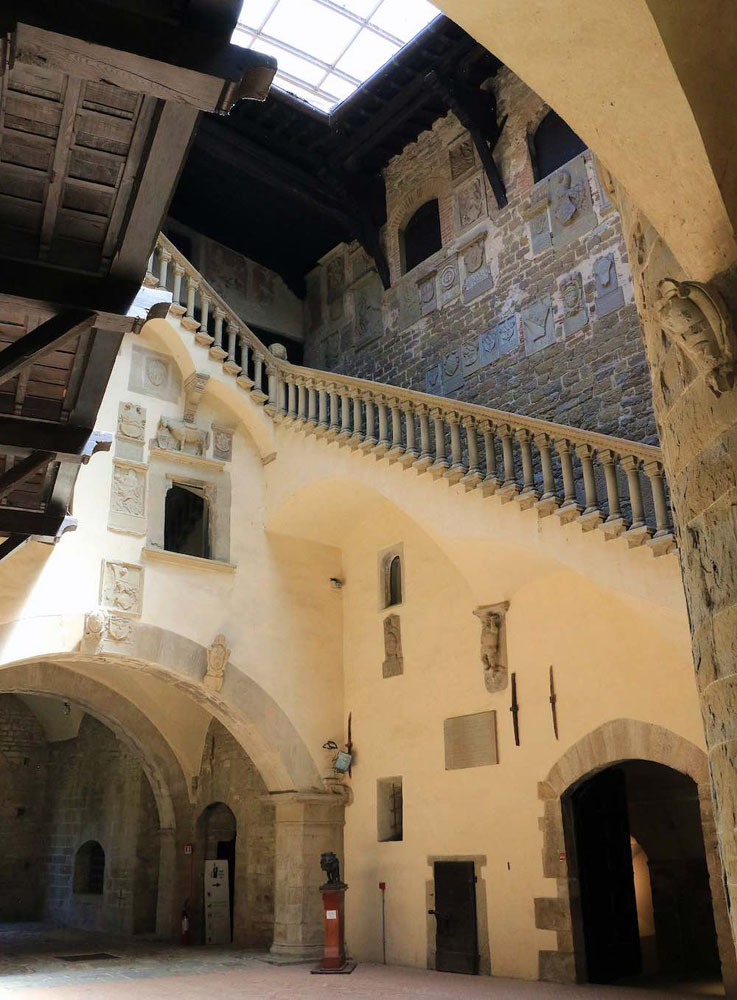Guided Tour among monasteries, sacred forests and castles in Tuscany. Camaldoli, Poppi and the Casentino Forest Park




Rediscover well-being in Casentino among green forests, hermitages and castles
Casentino is a splendid valley in Tuscany between Florence and Arezzo, located on the slopes of Mount Falterona from which the Arno river originates. It is a truly very special corner of Tuscany, where the splendid centuries-old beech, fir and chestnut forests hide unique sanctuaries and hermitages, places of faith where you can rediscover inner peace and the beauty of nature and art, moving away from the chaos of the world.
Casentino as a place of the soul
Characterized by a landscape of uncontaminated woods and forests, the Casentino valley is a spectacular place of the soul, so much so that 3 different saints lived there: San Romualdo, San Francesco and San Giovanni Gualberto. Its geographical isolation makes it a perfect historical and environmental example representative of what this portion of central Italy close to the Apennines must have been like in ancient times. Its forests are over four centuries old and preserve an extraordinary heritage of biodiversity, to be discovered thanks to well-marked paths, but also through organized activities. The villages, sanctuaries and castles tell ancient stories of nobles, saints and poets: the Counts Guidi, San Romualdo, San Francesco and Dante Alighieri are just some illustrious names who lived or stayed here.
The Sacred Hermitage and the Monastery of Camaldoli
In Camaldoli there are the Hermitage and the Monastery founded by San Romualdo in 1012, which still today constitute the mother-house of the order of Camaldolese monks who wear a white white tunic and dedicate themselves to the study, contemplation and care of the forest and the manual work. The Sacred Hermitage and the Monastery, immersed in the peace of the forest, represent two fundamental dimensions of the monastic experience, solitude and communion. The monastic community lives in search of God, in prayer and work, and is open to sharing with the men and women of our time. The Sacred Hermitage of Camaldoli is approximately 1200 meters above sea level, right in the heart of an extraordinary forest of silver firs: consists of twenty cells still inhabited by hermits arranged in regular rows, each equipped with a small vegetable garden for the hermit’s life in contemplation of nature of the monks who once had the task of planting, taking care of and protecting the forests.
The Camaldoli Monastery is a monastic complex located three kilometers from the Camaldoli Hermitage. It rises 818 meters above sea level and is located on the banks of one of the branches of the Archiano river, mentioned by Dante Alighieri (Purgatorio, canto fifth, verse 94). The architectural complex is composed of the ancient hospice or guesthouse, the church and the monastery. In the church of SS. Donato and Ilariano, with late Baroque architectural lines, you can admire splendid panels painted by Giorgio Vasari. In the Monastery complex it is possible to visit the Ancient Pharmacy, where the monks worked medicinal plants and herbs from the forest to treat the sick and where even today you can purchase preparations for body and health care made according to the ancient herbal recipes preserved jealously in the apothecary.
The Castle of Poppi where Dante composed the XXX chant of Hell (Inferno)
The Castle of the Counts Guidi of Poppi represents the main cultural and tourist reference of the Casentino valley. It still bears the name of its ancient owners, the Counts Guidi of Romena, who had it built as their own luxurious private residence in an elevated position where they originally only owned a watchtower over the Arno river, which is the one currently incorporated into the building. . The castle stands majestically on the top of the Poppi hill and can be seen from every corner of the Casentino, recognizable by its profile that resembles a large hand with the index finger pointing towards the sky.
The structure, which can be visited entirely, from the ancient prisons to the bell tower, dates back to the 10th century. You enter from the Ammunition Tower, which once housed the soldiers responsible for guarding the drawbridge. The actual Castle, surrounded by walls with Guelph battlements, is accessed through the Lion Gate, built in 1477. In the suggestive internal courtyard, a large fifteenth-century staircase, wooden galleries with remains of valuable original ceilings, an imposing eccentric column stand out to support the roof supported by overlapping brackets and numerous coats of arms that embellish the walls. From the court you can access the ancient prisons. On the upper floors, the Salone delle Feste stands out, covered with trusses and with a decorated ceiling, in which the surrender of the last of the Guidi counts, Francesco, to the Florentine Republic was signed in 1440.
Finally, of extraordinary historical-artistic importance is the Chapel of the Guidi Counts with a cycle of fourteenth-century frescoes depicting “Stories of the life of Saints John the Baptist and the Evangelist” attributed to Taddeo Gaddi, Giotto’s main pupil.
Housed on the main floor of the castle, the exhibition itinerary “The Hell in Campaldino” pays homage not only to the Battle of Campaldino fought in 1289 between the Guelphs and Ghibellines, in which the young Dante Alighieri participated, but to Florence and Arezzo in the middle of 1200s, to the Casentino area with its castles, to the war machines and warlike practices. The exhibition consists of panels and models of siege machines. Worthy of note is the model with over 6400 lead soldiers faithful to the parts in the field and perfectly arranged as per historical data.
On the first floor the Rilliana Library houses 25,000 volumes and pamphlets including a nucleus of over 700 incunabula (one of the largest Italian collections of printed specimens from the 15th century) and a collection of 800 manuscripts from the 11th century, rich in miniatures and ornate letters .
Tour Details
- TYPE OF TOUR: PRIVATE FOR INDIVIDUALS OR GROUPS – BY RESERVATION
- AVAILABLE ON DAYS: Monday, Tuesday, Wednesday, Thursday, Friday, Saturday, Sunday 10 AM - 4 PM
- DURATION: 6 HOURS
- TYPE OF SERVICE: GUIDED TOUR
- DIFFICULTY: Easy, suitable for children aged 6 and over and teenagers
- MEETING POINT: in front of the entrance to the Camaldoli Hermitage hamlet. Camaldoli (Poppi, AREZZO)
- NOTE: OPTIONAL RESERVATION AND PRE-SALE PURCHASE OF POPPI CASTLE TICKETS €11 per person
What you will see on the Tour Among Monasteries, Sacred Forests and Castles in Tuscany
- The Casentinesi Forest National Park
- The Sacred Hermitage of Camaldoli
- The Church of the SS. Savior
- The Camaldoli Monastery
- The Church of SS. Donato and Ilariano with the beautiful panels painted by Giorgio Vasari
- The Cloister of Maldolo
- The Ancient Pharmacy of Camaldoli
- The Pueri Cloister
- Poppi Castle
- The Castle’s Festival Hall
- The private chapel of the Guidi counts with frescoes by Taddeo Gaddi
- The Rilliana Library
- The exhibition itinerary “Hell in Campaldino”,



